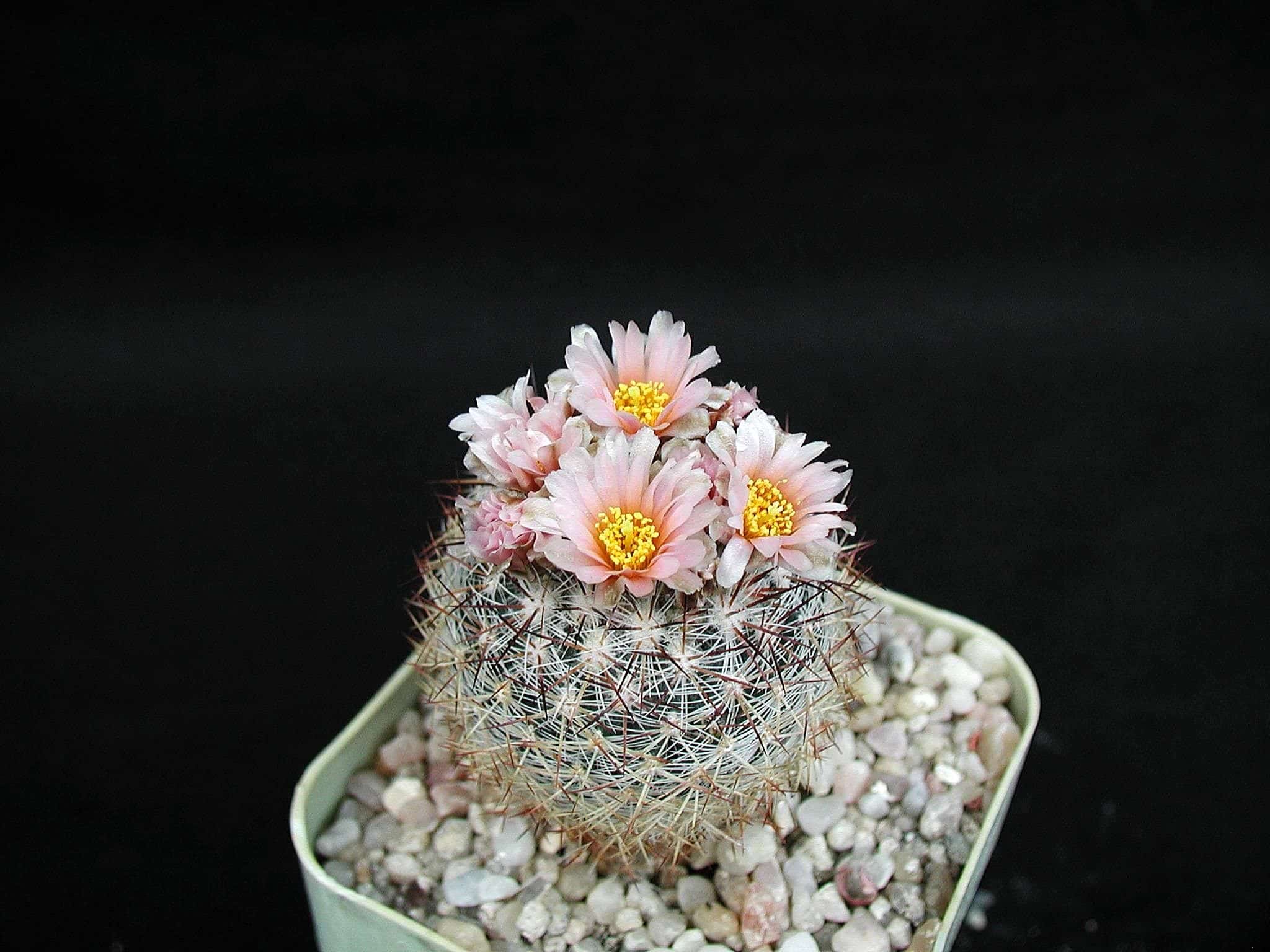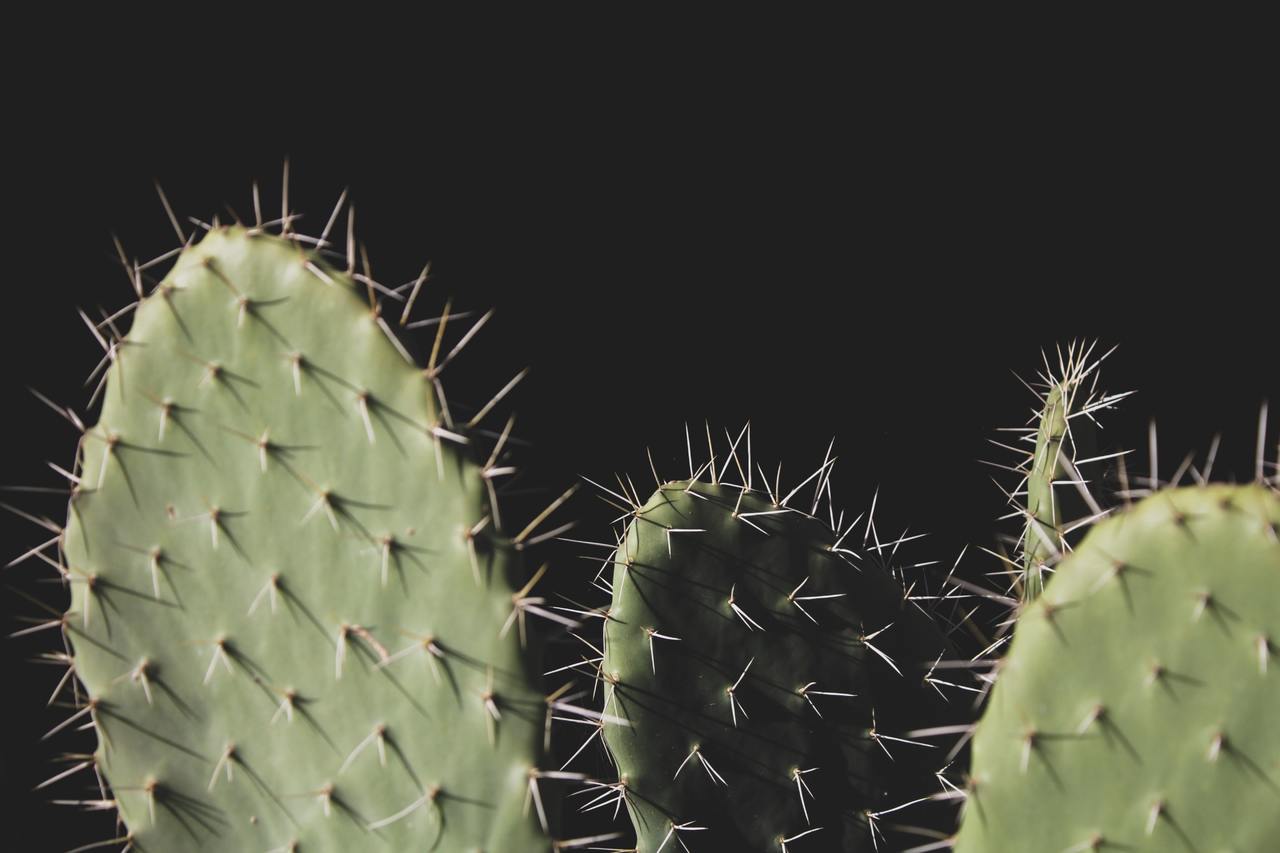
Cacti are succulent plants, usually with thorns, whose growth rate is characterized by being somewhat slow. This is especially noticeable when compared with others, such as horticultural plants for example, which in a matter of a few weeks or months have already reached their final size.
Now, it is precisely that detail, one of those that makes them so popular in gardens and patios almost all over the world. But If you want to discover how to make cacti grow faster, write down our tips.
Why do cacti grow 'slow'?

Before getting into the subject, it is interesting to understand a little why they have the growth rate that they have, because that way we will be able to know what we can do to make them grow a little faster. Well then, cacti are native to America, specifically from arid and semi-arid areas. In these places the plants live in very peculiar conditions, which are:
- sandy / stony soil with few nutrients
- very high temperatures, 40ºC or more during the day
- night temperatures below 20-30ºC, with occasional mild frosts
- rain shortage
What happens when it is so hot and water resources are very limited? Exact: what growth is minimal. The fact of growing involves a considerable expenditure of energy, and to have that energy it is vital to have the needs of water and nutrients covered.
But when we grow cacti in pots, another 'problem' is added, which is none other than the dependence it has on us to survive. And by this I mean irrigation, subscribing, prevention and treatment of pests and diseases, ... as well as transplantation. If we don't give them all the care they need, our favorite thorny plants will barely grow.
How to make cacti grow faster?
Now that we know why they grow at the rate they grow, it is time to take some measures that will serve to increase, at least a little, their growth rate. You have to be very clear that a cactus cannot be expected to grow, for example, 20 centimeters a year, as it is not genetically prepared for it; but we can get it to grow at a good pace, and above all to be in good health (which is the most important thing 😉).
Earth

Garden
Cacti are very sensitive to excess water; in fact, their roots rot easily if the soil in which they grow is compact and has bad drainage. That is why it is highly recommended (important if the soil is clayey) make planting holes of about 50 x 50cm, or 1m x 1m if the specimens are or will be large, and fill them with pumice, fine stone gravel (with a grain size of 1-3mm) mixed with 30% peat , or the like.
In the case that they are already planted, if the soil you have is not adequate, it is preferable to extract them, make the hole and fill it with some substrate mentioned before. Try to remove them with the whole root ball, making deep trenches around it. Do not forget to use protective measures, such as gloves -masonry if possible-.
Flower pot
The substrate to choose has to be equally porous, so that the drainage is fast and total. The water that is left over from the irrigation must be able to come out, away from the roots, otherwise they will end up rotting. For this reason, It is necessary to fill with substrates such as pumice, kiryuzuna, fine gravel of work (with a granulometry of 1-3mm) mixed with 30 or 40% peat, or the like.
Irrigation
Irrigation must be rather scarce. For security, It is always recommended to let the soil dry completely between one watering and the next. During the winter, if you live in a region where the climate is mild, it may be necessary to water only once a month depending on the climate in your area.
Thus, for example, if you live in a place where the frosts are very mild and punctual, with temperatures around 10-15ºC throughout that season, and if it also does not usually rain, your plants will probably need about 2 or 3 monthly irrigations. ; On the other hand, if you live in an area where it is colder and / or where it rains frequently, the irrigation will have to be suspended for a longer time.
In any case, when you water, direct the water to the ground, never to the plant. If it's potted, don't put a plate under it unless you remember to remove any excess water after watering.
Subscriber
During spring (once it has settled, and the temperatures are 15ºC or more) and the summer It is advisable to fertilize the cacti with a specific fertilizer for them, following the indications specified on the product packaging.
This contribution of nutrients will make them grow at a natural, healthy rhythm. You can buy one here.
Transplant (for potted cacti)

Potted cacti They have to be transplanted every so often, every 2-3 springs. It is a mistake never to change them. The roots from the first moment they get used to their new container resume their growth, and grow until a moment when they have already occupied the entire pot. So the plants stop growing in many cases, and there are others like the Ferocactus that begin to grow vertically, as if they wanted to get out of the container.
Then, When do you have to move them to another bigger pot? When some of these situations occur:
- When roots grow out of drainage holes
- When the roots and / or the plant have occupied the entire pot
- When i've lost a lot of land
- When more than 3 years have passed since the last transplant
- And also if it is in a land of poor quality, with very poor drainage
The step by step to follow is:
- First, choose a plastic or clay pot with holes (the clay ones are more suitable, as they allow the roots to 'grip' better, which contributes to the growth is somewhat faster) that is about 3-5cm (It will depend on the cactus) greater than the previous one.
- Then, fill it in a little with quality substrate, such as pumice (for sale here), kiryuzuna, or if you want fine gravel (1-3mm thick) mixed with 30% peat.
- Next, remove the cactus from the old pot, and place it in the center of the new one. Make sure it is neither too high nor too low, and if you see that it is necessary, feel free to add or remove substrate.
- Then finish filling.
- Finally, place the pot outside, in a bright place.
Location
Cacti need direct sun to grow, which is why they don't usually adapt well to living indoors. But this does not mean that they have to be worn just after buying them to a sunny exhibition. If done, the plants would be burned. To avoid it, it is very important that they get used to it little by little and gradually, exposing them for an hour to the sun in the morning or in the late afternoon -which is less intense-, and gradually increasing that period of exposure by 30 to 60 minutes every few days or weeks.
Following all these tips, we can assure you that you will have healthy cacti, and that they will grow ... well, at an interesting rate considering the type of plants they are 🙂.
Good afternoon, my cacti, they have turned white, they told me it could be because of the sun. I water them when the soil is very dry.
Hello Angel.
Yes, it might be because of the sun if they are not used to it. I recommend putting them in semi-shade so they can recover (although those spots will not disappear). On this article You have more information.
Greetings.